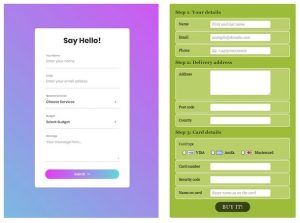By Katrina Pfannkuch, Published November 14, 2014

One of the biggest advantages of online marketing in a tight, competitive market is a company’s ability to quickly produce and distribute relevant, timely content that grabs the attention of customers. And now that 2015 is just around the corner, many marketers are reviewing their successes and failures from the past year to inform tactics and strategies moving forward.
With that in mind, take a look at 10 stats that will help you create a content strategy that rocks you past the competition in 2015.
What Goes into a Content Strategy
Content strategy has evolved way beyond brochures, ads in print publications, and sending people to a well-written web page. You need:
- To curate a strong and consistent presence across key social media networks
- A well-written blog with a consistent publishing schedule
- To cover topics that are of interest to your customers and provide a reason for them to return to your website frequently
- A way to measure the impact of your content strategy and tweak what isn’t working
- To craft a clear, unified, documented content plan for your team
When you can incorporate these elements into your content strategy, you are setting yourself up to reap the advantages of online marketing—and giving potential customers exactly what they need to make fast, confident purchase decisions.
Let’s Dive into the Stats
1. Only 35% of B2B content marketers have a documented content strategy. (Tweet This)
If you aren’t part of this 35% of B2B content marketers, what’s stopping you?
A content strategy is no longer a “someday” project for an intern; it’s what’s going to help you keep your skin in the game and increase the number of “touch points” for connecting with your target audience.
(source)
2. The average return on an email marketing investment is $ 44.25 for every dollar spent. (Tweet This)
Ladies and gentlemen, email marketing is NOT dead, and should definitely be included in your future content plans. This is a huge return on marketing dollars invested, and that kind of ROI adds up. The key is crafting an interesting email marketing campaign that engages users and nurtures them toward purchase.
(source)
3. B2B companies that blog generate 67% more leads per month than those who do not blog. (Tweet This)
A blog can be one of the most powerful weapons in your content arsenal. And benefits go beyond thought leadership and engagement. As this stat shows, blogs have a huge impact on lead generation. But to get the most out of the channel, it takes planning, collaboration, and consistency. Without these elements, a good blog will quickly go bad.
(source)
4. 37% of marketers say blogs are the most valuable type of content marketing. (Tweet This)
If you aren’t already blogging regularly about topics relevant to customers, you are losing significant online market share. Remember, focusing on education in blog posts is a must. Grasping for a sale in every post is a major turn off, although linking to items or services for purchase is perfectly fine. The more you can provide value, the easier it is to get people to click around the site, come back more frequently, and build the kind of trust that leads to a purchase decision.
(source)
5. 72% of marketers think that branded content is more effective than magazine advertisements. 69% say it’s superior to direct mail and PR. (Tweet This)
Branded content rules the roost. And with all of the information flying around the web, quality content helps you stand out as an expert in your field. People don’t always enjoy being blatantly advertised to, but they do want to read information that comes from a trusted source, enriches their lives, and can be applied to their careers. By developing more branded content in 2015, you are creating an easy way to be seen as a thought leader and go-to resource for your target audience.
(source)
6. Interactive content—such as apps, assessments, calculators, and quizzes—generates conversions moderately or very well 70% of the time, compared to just 36% of the time for passive content. (Tweet This)
Beyond the passive content in print and online, make room for interactive content. Apps, quizzes, polls, and other “functional” pieces entice people to participate and share their thoughts or results on social media. Interactive content adds a whole other dimension to “word-of-mouth” advertising, and is pushed through more diverse channels by people outside your business.
And if you need more convincing, interactive content also drives 2X the conversions.
7. By 2017, online video will make up nearly 70% of consumer Internet traffic. (Tweet This)
Online video has always been a powerful tool, but it’s becoming more mainstream for businesses of all sizes. The combination of visual and audio elements adds an immediately engaging, human, and emotional touch to content. And as mobile viewing stats continue to increase with the rate of technology advancements, video has more outlets for potential “eyeballs” than ever before.
(source)
8. Three-quarters (75%) of executives said they watch work-related videos on business-related websites at least weekly; more than half (52%) watch work-related videos on YouTube at least weekly. (Tweet This)
Videos and podcasts geared toward executives are a great investment for a variety of reasons. Not only are executives more willing to purchase after watching a video, but they also share videos with colleagues, creating a valuable business and social dynamic around the video experience.
(source)
9. Social media has overtaken pornography as the No. 1 activity on the web. (Tweet This)
This is a milestone in the Internet Age, and solidifies social media’s top spot in shaping a strong content strategy. People use digital networks to connect over shared interests and have real conversations. Being part of these interactions gives businesses the opportunity to engage with target audiences in a meaningful way, and provides insight into developing trends and news.
(source)
10. By 2020, customers will manage 85% of their relationships without talking to a human. (Tweet This)
We all knew that the rise of the machine was coming, but the impact it has on your content strategy is still under construction. Now is the time to figure out how to automate key aspects of the sales process and add personalization into your content strategy. Tackling this in 2015 will help you match the needs and expectations of your customers, and will keep you ahead of this trend instead of struggling to catch up.
(source)
Now is the perfect time to ramp up your content strategy for 2015. These stats provide insight into what marketers and, more importantly, buyers find valuable in today’s digital world. What will you take into 2015?
Business Articles | Business 2 Community
(413)
Report Post






